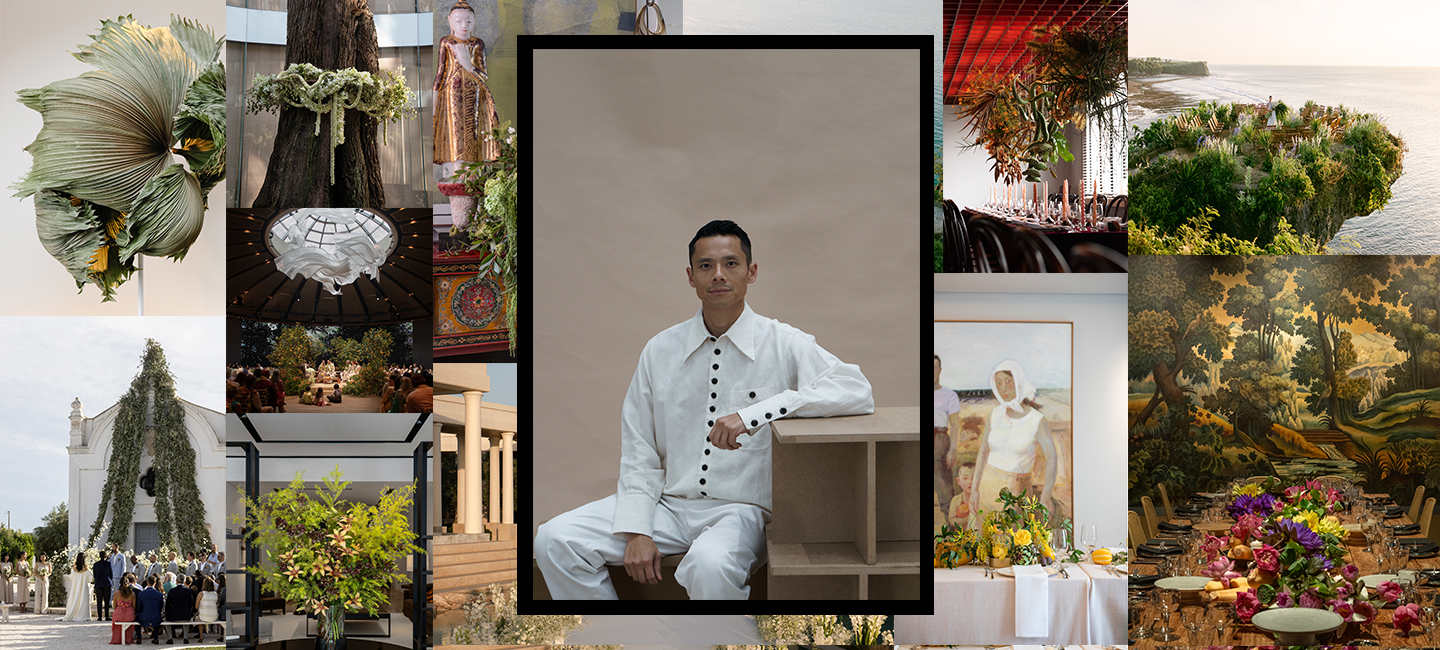In the realm of botanical design, where nature’s raw beauty intersects with human creativity, few names resonate as profoundly as The Humid House. Founded by the visionary John Lim, this studio has carved a unique niche by harmonising the lush, tropical vibrancy of Singapore with the sophisticated elegance of Paris. In Singapore, a city known for its dynamic blend of rainforests, mangroves, and urban greenery, the Humid House draws inspiration from the rich tapestry of local flora. The studio’s innovative use of tropical materials, often incorporating non-native species in fresh, non-clichéd ways, exemplifies a profound respect for the environment coupled with a relentless drive for artistic experimentation.
Looking ahead, John Lim envisions continued innovation in botanical design, with aspirations to develop educational programs and workshops, furthering their impact and inspiring others to appreciate the beauty and potential of the natural world.

Can you describe how The Humid House’s approach to botanical design reflects the cultural context of the places it operates in, particularly Singapore and Paris?
Our approach is deeply rooted in the context of place. In Singapore, we’re inspired by the city’s unique, hybrid culture despite its relatively short human history. The lushly planted environment here is fascinating, combining remnants of rainforests and mangroves with a green policy that’s experimental in embracing non-native plant species. This gives us access to an expanded palette of tropical materials, making our work more exciting.
In Paris, we acknowledge the city’s and its people’s rich historical relationship with flowers while also striving to represent the international city that Paris is, with its mélange of cultures and enclaves. The move to Paris has allowed us to explore new materials associated with its distinct seasons. Each location informs our design language, allowing us to create works that feel true to the essence of their surroundings.
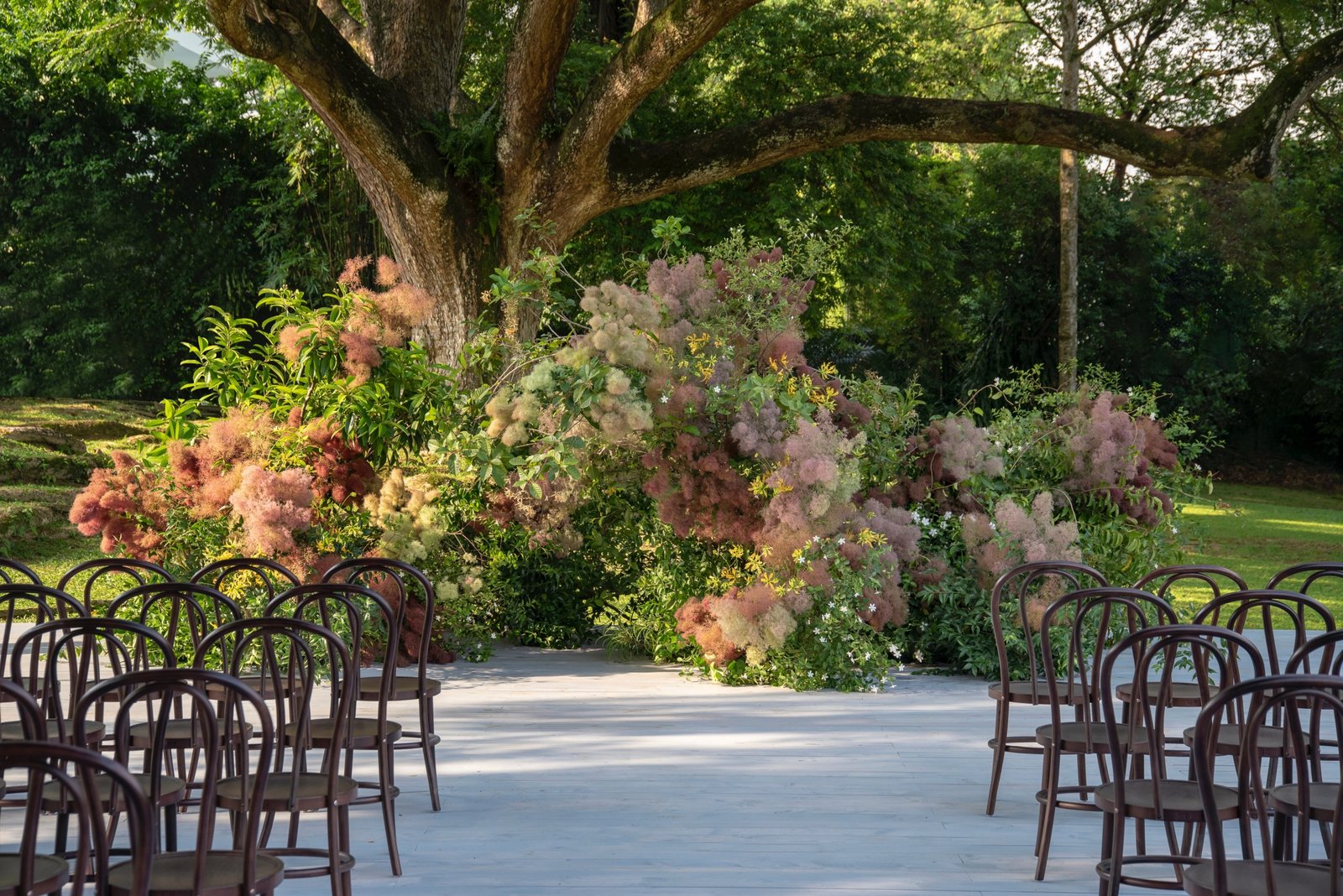
You have previously mentioned a focus on using local materials in a fresh and non-clichéd way. How does the studio go about sourcing and incorporating indigenous elements into its designs?
There’s a joy in being able to thrill with the familiar, and one way to do this is by combining materials in unexpected ways or simply presenting them differently to make us see them in a new light. For instance, bougainvillaea is ubiquitous here, and when it blooms, it does so spectacularly. We strip it of its leaves—a laborious process—but the result is incredible, transforming it into something light and airy, with the quality of the most delicate spring blooms.
We take extra care and effort to source harder-to-find or difficult-to-use materials that are not commercially available. We work closely with local and regional nurseries and growers, and we’ve even started our own cutting garden to cultivate non-commercially available cut flowers. With the recent expansion into Paris, what are the main differences in approach or design philosophy between the Singapore and Paris studios?
The approach is precisely the same! The work, of course, will look different because it’s so contextual—we work with very different ingredients—but another significant consideration is the calibration to the audience. There is a language with flowers in Europe, particularly in Paris, where a certain kind of unfussed elegance acts as a cultural code. We’re mindful of that.
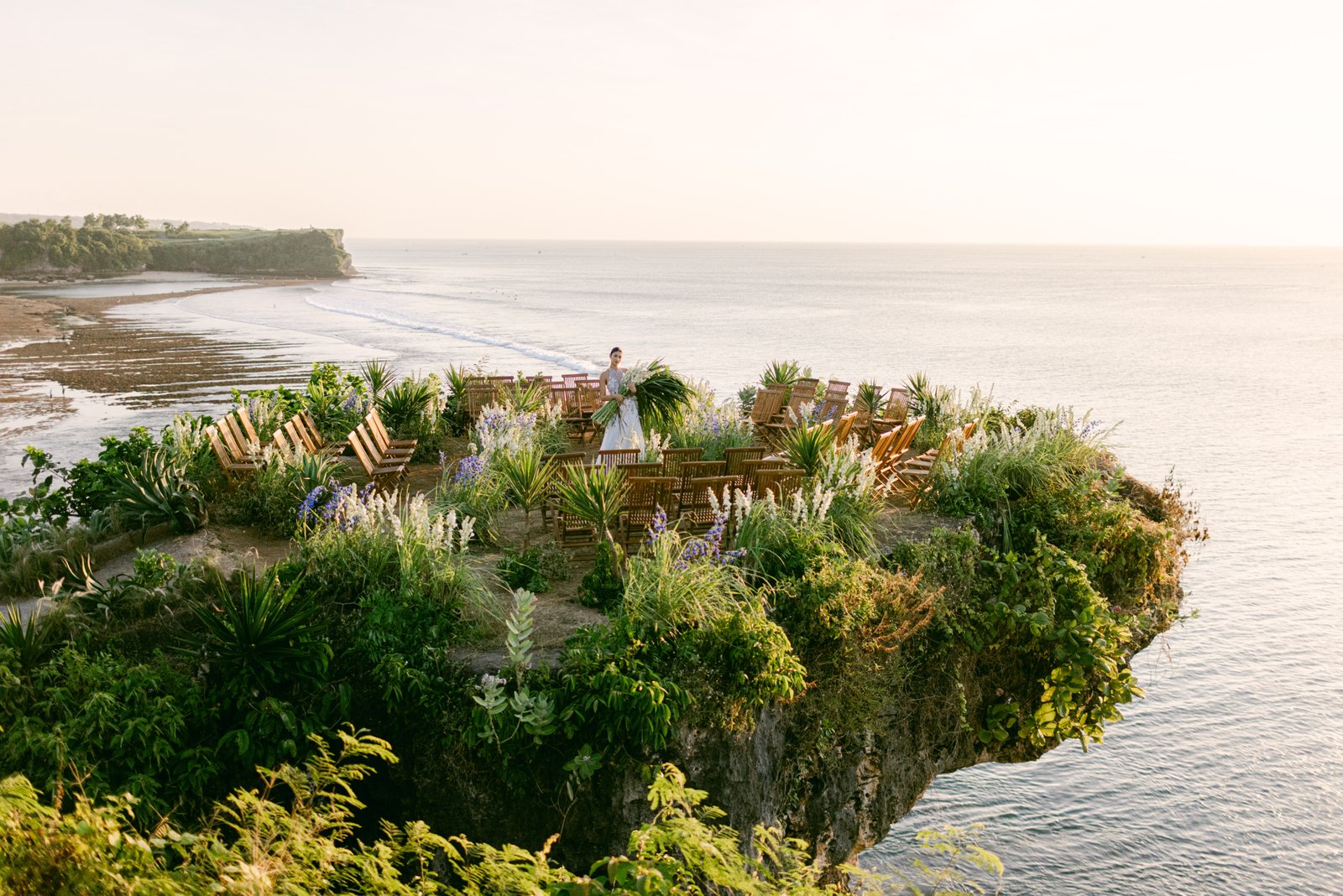
You’ve mentioned a shift in the approach towards floral design for weddings and events in Singapore, with a move towards more adventurous, intimate, and meaningful elements. How does The Humid House cater to these changing preferences?
We love this shift towards more personal and adventurous expressions in weddings and events, although adventure is never for adventure’s sake. It’s about trying to be meaningful first, and then the adventure comes in challenging the status quo when it calls for it. In some ways, that’s a position that’s actually very respectful of traditions.
We work closely with our clients and wedding and event planners to understand their vision and preferences. Whether through unconventional material choices, unique installations, or integrating personal elements, we strive to make each event a unique reflection of our clients’ personalities and stories. Our goal is always to create moments that resonate emotionally and aesthetically.
Could you elaborate on the studio’s efforts towards sustainability, particularly the establishment of its own cutting garden? How does The Humid House integrate sustainability into its design process and operations?
Our approach to sourcing materials as close to home as possible is fundamentally more sustainable. Our cutting garden is a testament to this commitment, allowing us to grow many of the materials we use, reducing our reliance on imports and minimising our carbon footprint.
Additionally, we avoid using floral foam, a non-biodegradable product and strive to use reusable and recyclable materials wherever possible. We aim to weave more sustainable practices into every step of our process, from sourcing to execution, ensuring that our practices are kind to the environment.
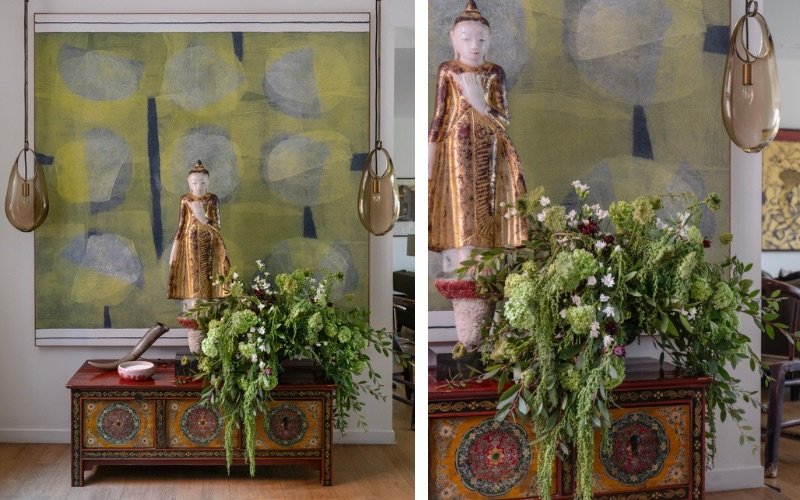
The Humid House often incorporates unusual or rare botanical species into its designs. How does the studio balance creativity and accessibility when working with such materials?
Balancing creativity with accessibility is indeed a delicate act. We love working with rare and unusual botanicals because they offer a fresh perspective and unique aesthetic qualities. However, we ensure our designs remain accessible by blending these rare elements with more familiar materials. This creates a visually striking contrast and allows us to highlight the uniqueness of the rare botanicals without making the design feel alien. We aim to inspire awe and curiosity while maintaining connection and relatability in our work.
The Humid House is described as creating installations that evoke emotional connections with viewers. Could you elaborate on how the studio achieves this emotional resonance through its botanical designs?
Emotional resonance is central to our work. We achieve this by focusing on storytelling through our designs. Each arrangement or installation is crafted to evoke a particular feeling or memory, using plants and flowers as the narrative medium. We consider elements like texture, colour, and form and how they interact with light and space to create an immersive experience. Our installations often draw from cultural and personal references, which helps establish a deeper connection with the viewer. It’s about creating moments that are not just seen but felt.
The studio is known for its experimental works of art that blend flora with other design disciplines like fine art and architecture. Can you provide insight into the collaborative process of creating these interdisciplinary installations?
Collaboration is the lifeblood of our creative process. Working with experts from different fields—fine art, architecture, or culinary arts—brings fresh perspectives and new ideas. Our process is fluid and intuitive, often starting with a shared vision or concept. We brainstorm and experiment from there, allowing each discipline to inform and enrich the other. This cross-pollination of ideas leads to innovative and cohesive installations that transcend traditional boundaries. It’s a dynamic and iterative process that thrives on open communication and mutual respect for each other’s craft.
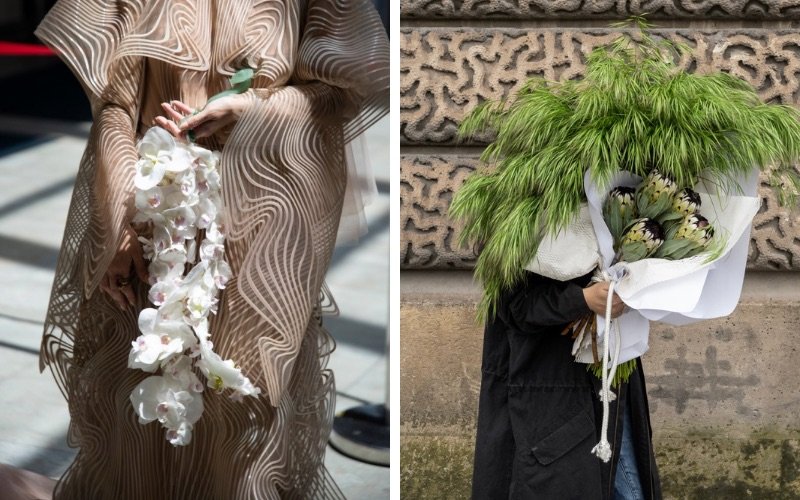
Again, you have previously spoken about a focus on using lighting intentionally to set the right tone in botanical installations. Can you share some strategies or techniques the studio employs to enhance its designs through lighting
Lighting is a critical element in our designs. We use it to highlight textures, create shadows, and set the mood. One technique we employ is using different colour temperatures to evoke various atmospheres—warmer tones for intimate, cosy settings and cooler tones for fresh, vibrant spaces. We also play with the direction and intensity of light to create depth and drama, ensuring that each installation is viewed in the best possible light, literally and figuratively. It’s about enhancing the natural beauty of the botanicals while also shaping the viewer’s experience of the space.
With the rise of digital platforms and social media, how does The Humid House leverage these channels to showcase its designs and connect with clients? Are there any specific strategies or campaigns the studio has found particularly effective?
Social media has been a powerful tool for us. It allows us to share our work with a global audience and connect with clients more personally and immediately. We focus on high-quality visuals and storytelling, giving our followers a behind-the-scenes look at our creative process. Campaigns highlighting the journey from concept to completion, client testimonials and the occasional interactive Q&A sessions have been particularly effective. It’s about building a community and engaging with our audience meaningfully, showcasing the passion and thought that goes into each project.
Step into a fairytale at Aman Peloponnese with Humid House’s enchanting floral aisle. Adorned with majestic delphiniums, delicate gypsophilia, and elegant gladiolus, this breathtaking path sets the stage for a wedding celebration as timeless and beautiful as the Greek landscape itself.

Looking to the future, what are some long-term goals or aspirations for The Humid House, both in terms of design innovation and business growth?
Our long-term vision is to continue pushing the boundaries of botanical design, exploring new materials and techniques while staying true to our core values of sustainability and contextual sensitivity. We also aspire to develop educational programs and workshops to share our knowledge and passion with a wider audience. Ultimately, we want to create a lasting impact in botanical design, inspiring others to see the beauty and potential in the natural world.
John Lim and The Humid House epitomise the power of botanical design. Their work is a harmonious blend of nature and artistry, deeply rooted in the cultural contexts of Singapore and Paris. Through innovative use of materials, a commitment to sustainability, and a profound respect for tradition and audience, The Humid House creates botanical installations that are not only visually stunning but emotionally resonant.
In a world increasingly disconnected from nature, The Humid House serves as a reminder of the beauty and potential inherent in the botanical realm. Their work invites us to see familiar plants in new ways, to appreciate the stories that can be told through flowers and foliage, and to recognise the profound impact that thoughtful, contextually sensitive design can have on our spaces and our lives. Through their artistry, The Humid House continues to enchant, inspire, and elevate the field of botanical design to new heights.
Image Credits: The Humid House

